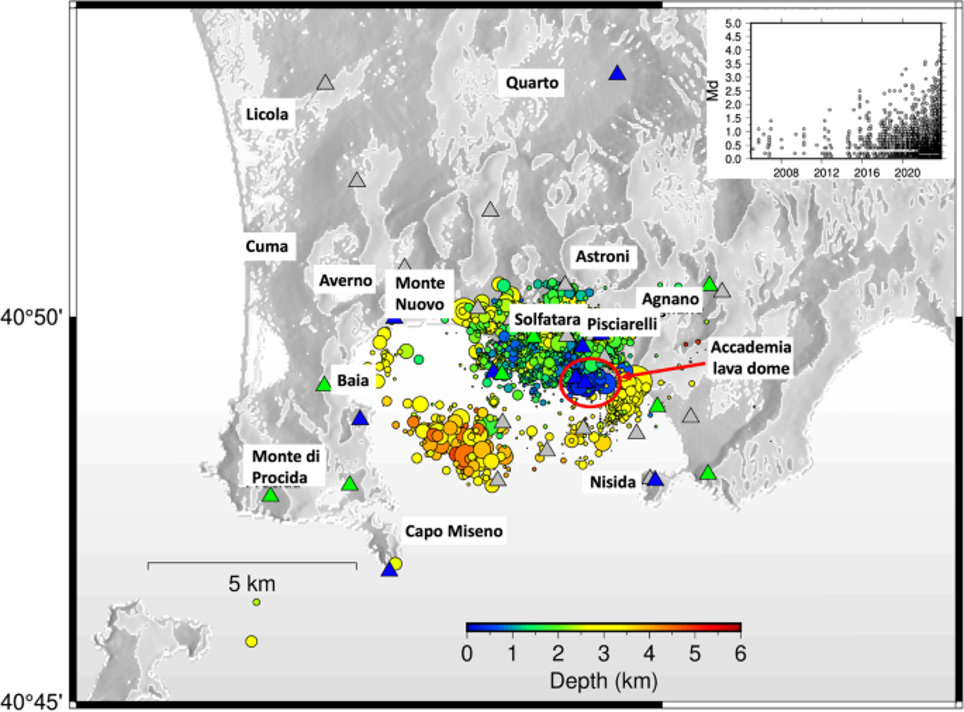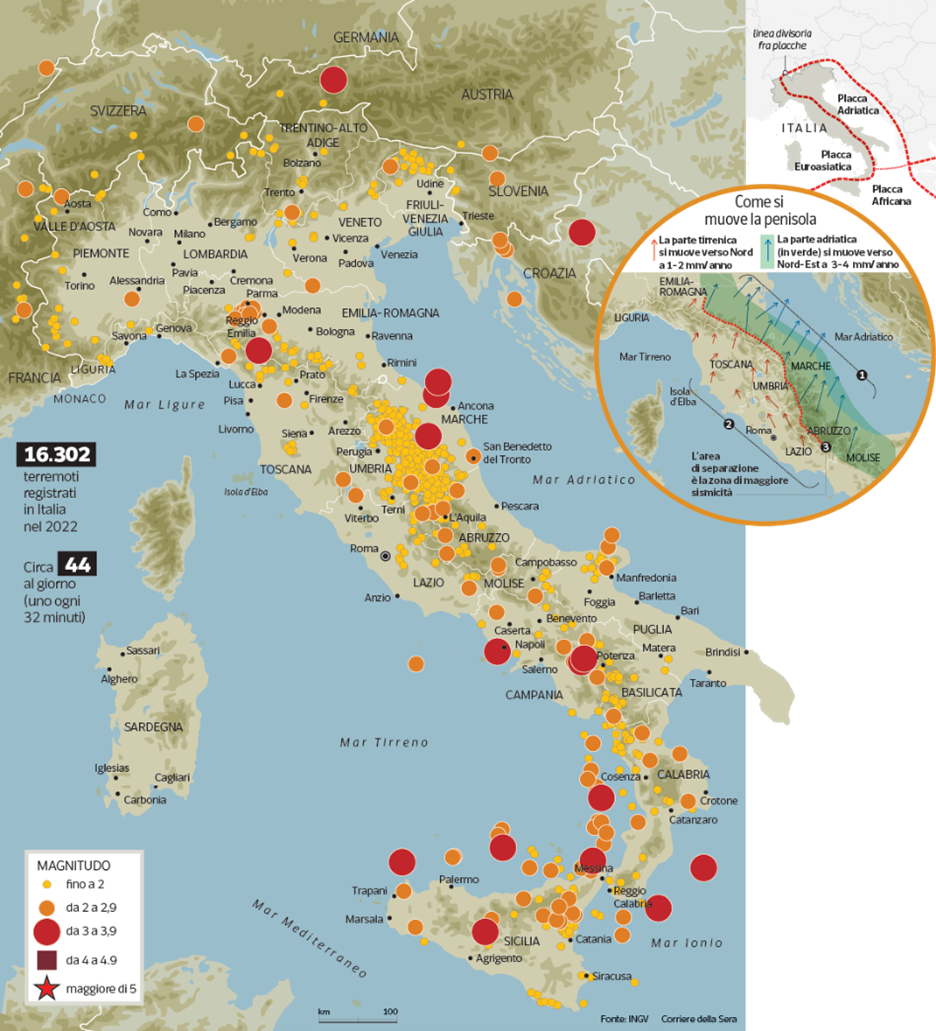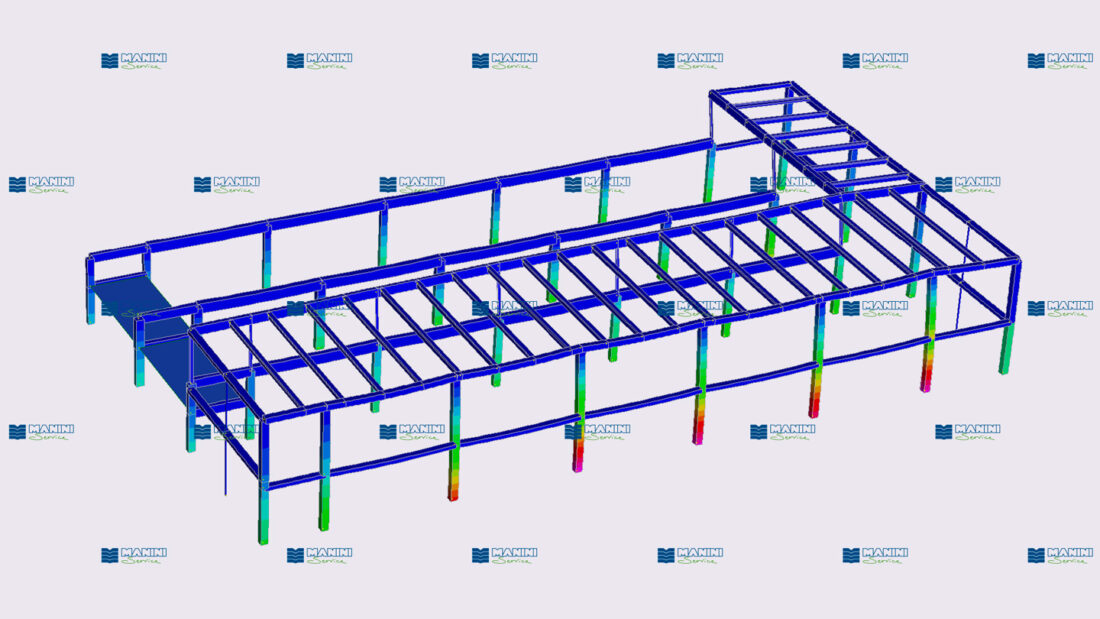
Seismic Monitoring and Campi Flegrei: What the Research Says
Following the seismic monitoring of events detected in the Campi Flegrei, the team of researchers from the National Institute of Geophysics and Volcanology (INGV), in collaboration with the University of Campania Luigi Vanvitelli, is continuing research, constantly monitoring the caldera, which has been subject to numerous volcanic earthquakes since May.
The seismic monitoring research aims to identify how the characteristics of the area’s Earth’s crust, temperature, and stress to which it is subjected influence the relationship between the total number of earthquakes and their magnitudes, known as the Gutenberg-Richter relationship. The variable under analysis is the b-value, which relates the number of high-magnitude earthquakes to the number of low-magnitude earthquakes.
Seismic Monitoring: Data Analysis and Implications
According to observations and analyses carried out on the global seismic catalog, it can be deduced that the b-value approaches unity in the presence of high-magnitude earthquakes (up to Md= 4.4). This means that for every seismic event of MI equal to 4.0, there are 10 seismic events of MI equal to 3.0.
The research conducted by the team of experts on the caldera allows for a deeper understanding of seismic monitoring and volcanic dynamics. This paves the way for the implementation of possible innovative detection systems, applicable to other seismically active areas.
The National Accelerometric Network has recorded several tremors of varying intensity during the phenomenon of lowering and raising of the caldera (a phenomenon called “bradyseism”). In particular, the strongest tremor was recorded during the monitoring on May 20, with a magnitude of 4.4 and at a depth of 3 km from the surface. The maximum acceleration recorded in the Municipality of Pozzuoli was 358.74 cm/s². It appears that the event was among the most energetic recorded since the beginning of the bradyseismic crisis in the area.
Manini Prefabbricati Seismic Monitoring: the Manini Connect System
In line with the research conducted in this field, the Manini Connect monitoring system presents itself as a real-time remote structural seismic monitoring system. This system is capable of monitoring and recording the accelerations perceived by buildings during seismic events of a certain magnitude.
Manini Connect is also able to compare the accelerations recorded by the sensors with the limit states dictated by regulations. This allows for real-time evaluation, providing information on how the monitored structures have reacted to the event.
A specific algorithm has been internally developed for processing accelerometric data, which, once received as input from the instrumentation, converts it into displacement. The advantage of the system is indeed to compare the theoretical design displacements with those actually recorded on the building hit by the earthquake, allowing for a report on how the structure reacted to the seismic shock.
The communication flow following an event is reported below:
- The installed sensors detect in real-time the accelerations given by the oscillations of the structure;
- Clients are contacted by phone from the Control Room, the data management center at Manini Service;
- The detected data are collected, analyzed, and promptly compared to the data disseminated by the national accelerometric network.
The Manini Connect does not stop at seismic monitoring but also checks additional parameters related to atmospheric events and environmental quality. It includes monitoring of proper rainwater drainage, wind actions, CO2 emissions, and internal temperature and relative humidity of the building.
References:



